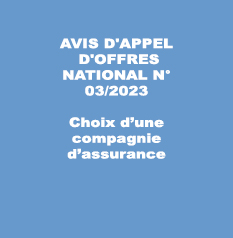| Programme annuel & rapport de suivi technique |
-

Rapport d'activités 2023
-

Programmes Techniques 2024
|
| Géocatalogue |

|
| Appels d'Offres |
-

ACQUISITION DES TICKETS RESTAURANT POUR LE PERSONNEL DE L’ONM
-

CHOIX D’UNE COMPAGNIE D’ASSURANCE
-

ACQUISITION ET MISE EN ŒUVRE D’UN PROGICIEL DE GESTION INTEGRE
|
|
Investir en Tunisie |


|
|
|
|
|
::
Documentation and Editions
>>
Research library
|
| |
|
[
Search by author
]
[
Search keyword
]
[
Search by index
]
[
Search by category
]
|
title of the reference :
|
Silurian and Devonian tentaculites from Libya and Tunisia.
|
|
Publication Date:
|
1978
|
|
Author :
|
Hajlasz Barbara, Massa Dominique, Bonnefous Jean
|
|
Catalogue type :
|
Livre
|
|
Catalogue reference :
|
(FRA) Bull. Cent. Rech. Explor. Prod. Elf-Aquitaine Silurian and Devonian tentaculites from Libya and Tunisia. Tentaculites du Silurien et du dévonien de Libye et de Tunisie. Geographical limits of this study are the two Paleozoic Basins of western Libya and southern Tunisia (Rhadames and Murzuk Basins). Silurian and Devorian deposits are examined, using a stratigraphy now revised. The fauna listed and described come from outcrop areas in southern Libya, from oil wells in southern Tunisia (SEREPT)or Tripolitania (CPTL). From description of species, forms referring to the main orders can be identified: Tentaculitida, Nowakiida and Styliolinida. Three new species are described. The stratigraphical value of Tentaculites is stressed. Attention is drawn to those particular environments with facies rich in Tentaculites, namely: - Neritic to deltaic facies in the Fezzan outcrops, characterized by sandstones or ferruginous oolites. Associated plant remains are abundant (Lycophytes and Psilophytes). - Open sea facies, shallow, usually argillaceous and carbonated, on the shelf of the northern Rhadames Basin. The study allows the stratigraphical value of Tentaculites to be confirmed. Paleogeographical correlations between the Tunisian-Libyan Basins and the Russian Platform may be suggested. To conclude, Tentaculites are valuable fossils in establishing Devonian stratigraphy in this eastern part of North Africa, where macrofaunas are scarce, badly preserved and often of value. Emsian, Eifelian, Givetian and Frasnian stages can be characterized from these alone, not only in outcrop areas, but also in oil wells. In the latter case, Tentaculites can be extracted simply by washing the drill cuttings. tentaculites ; problematica ; Silurien ; Dévonien ; minéral nouveau ; cornulites ; Libye ; Tunisie Massa Dominique Bonnefous Jean Hajlasz Barbara paleontologie
|
|
Indexation decimale :
|
paleontologie
|
|
Keywords :
|
tentaculites ; problematica ; Silurien ; Dévonien ; minéral nouveau ; cornulites ; Libye ; Tunisie
|
|
Summary :
|
Geographical limits of this study are the two Paleozoic Basins of western Libya and southern Tunisia (Rhadames and Murzuk Basins). Silurian and Devorian deposits are examined, using a stratigraphy now revised. The fauna listed and described come from outcrop areas in southern Libya, from oil wells in southern Tunisia (SEREPT)or Tripolitania (CPTL). From description of species, forms referring to the main orders can be identified: Tentaculitida, Nowakiida and Styliolinida. Three new species are described. The stratigraphical value of Tentaculites is stressed. Attention is drawn to those particular environments with facies rich in Tentaculites, namely: - Neritic to deltaic facies in the Fezzan outcrops, characterized by sandstones or ferruginous oolites. Associated plant remains are abundant (Lycophytes and Psilophytes). - Open sea facies, shallow, usually argillaceous and carbonated, on the shelf of the northern Rhadames Basin. The study allows the stratigraphical value of Tentaculites to be confirmed. Paleogeographical correlations between the Tunisian-Libyan Basins and the Russian Platform may be suggested. To conclude, Tentaculites are valuable fossils in establishing Devonian stratigraphy in this eastern part of North Africa, where macrofaunas are scarce, badly preserved and often of value. Emsian, Eifelian, Givetian and Frasnian stages can be characterized from these alone, not only in outcrop areas, but also in oil wells. In the latter case, Tentaculites can be extracted simply by washing the drill cuttings.
|
|
Exemplaries :
|
TU902
|
|
|
|
|
|
|
|



